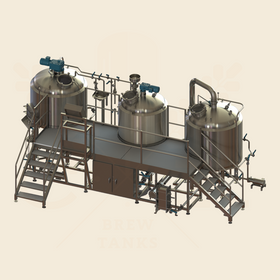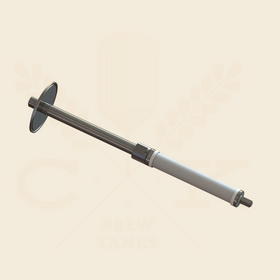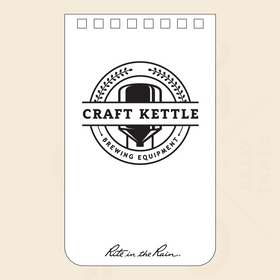
Dry Hopping: A Technical Overview
Dry hopping is a brewing practice involving the addition of hops post-boiling, typically during or after fermentation. This process enhances hop aroma and flavor without substantially increasing bitterness. Here's a closer look:
1. Timing
The timing of dry hopping plays a significant role in the resulting flavor and aroma:
- During Fermentation: Adding hops during active fermentation can create a biotransformation effect, altering hop compounds for unique flavors.
- Post-Fermentation: Hops added after fermentation may emphasize purer hop aromas and retain more volatile compounds.
2. Forms of Hops Used
Different forms of hops can be used in dry hopping:
- Pellets: These are compacted hops that allow for more surface area exposure, leading to more efficient extraction of flavors.
- Whole Hops: These provide a less processed, more "natural" hop flavor but can be more challenging to handle.
- Hop Oils: Extracted essential oils of hops offer a controlled and consistent way to impart specific flavors.
3. Techniques
Dry hopping techniques may vary depending on the brew size and desired characteristics:
- Static Dry Hopping: Adding hops directly to the fermenter and letting them steep.
- Recirculating Dry Hopping: Continuously moving the beer over the hops to increase contact and extraction.
Equipment Used in the Dry Hopping Process
Dry hopping equipment can range from the simple to the sophisticated, depending on the scale and specific needs of the brewing operation. Here's an exploration:
1. Fermenters with Dry Hopping Ports
Many modern fermenters, including all standard Craft Kettle designs, come with specialized ports designed for dry hopping. These ports allow brewers to add hops without exposing the beer to excessive oxygen, preserving the beer's freshness.
2. Hop Dosing Tanks
These are specialized tanks that enable precise dosing of hop pellets or whole hops. They can be integrated with the fermenter and often come with features to minimize oxygen pickup.
3. Hop Guns or Cannons
Hop guns or cannons are becoming increasingly popular, particularly in larger breweries. They allow the brewer to circulate beer through a chamber filled with hops, enhancing flavor extraction while minimizing oxygen exposure. They also provide an efficient way to handle and remove spent hops.
4. Recirculation Systems
Recirculating the beer through the hops can be achieved using pumps and specialized equipment designed for this purpose. This method ensures a higher level of contact between the hops and the beer, leading to better flavor and aroma extraction.
5. Oxygen Purge Systems
Since oxygen can negatively impact the beer's flavor and stability, oxygen purge systems that use inert gases (such as CO2 or nitrogen) can be employed during dry hopping to minimize oxygen contact.
6. Manual Methods
For smaller-scale or experimental brews, simple manual methods might still be preferred. This could include opening the fermenter and adding hops directly, using mesh bags to contain the hops, or other low-tech solutions.
7. Filtration Systems
Post dry hopping, filtration systems may be used to remove hop particles from the beer. This can include plate filters, centrifuges, or other mechanical separation methods.
Common Hop Varieties and Flavor Profiles
Understanding different hop varieties and their flavor profiles is essential in creating unique and desired beer characteristics:
- Cascade: Offers a citrusy, grapefruit-like character with floral notes. Great for American Pale Ales and IPAs.
- Centennial: A balanced blend of citrus and floral flavors with some piney and earthy elements. A versatile hop suitable for various styles.
- Citra: Known for its strong tropical fruit characteristics, such as mango, lime, and lychee. Often used in modern IPAs.
- Fuggle: A classic English hop variety providing mild, woody, and earthy tones. Used in traditional English-style beers.
Conclusion
Dry hopping is an art and science that allows brewers to experiment with flavors and aromas in beer. By understanding the timing, types of hops, and utilizing proper techniques, brewers can create distinct and memorable brews. Whether it's the zesty punch of Citra or the subtle charm of Fuggle, the choice of hop variety plays a vital role in defining a beer's personality.
The choice of equipment and method for dry hopping can have a profound impact on the final product. From artisanal manual methods to state-of-the-art hop cannons, the options are vast and continue to evolve.




